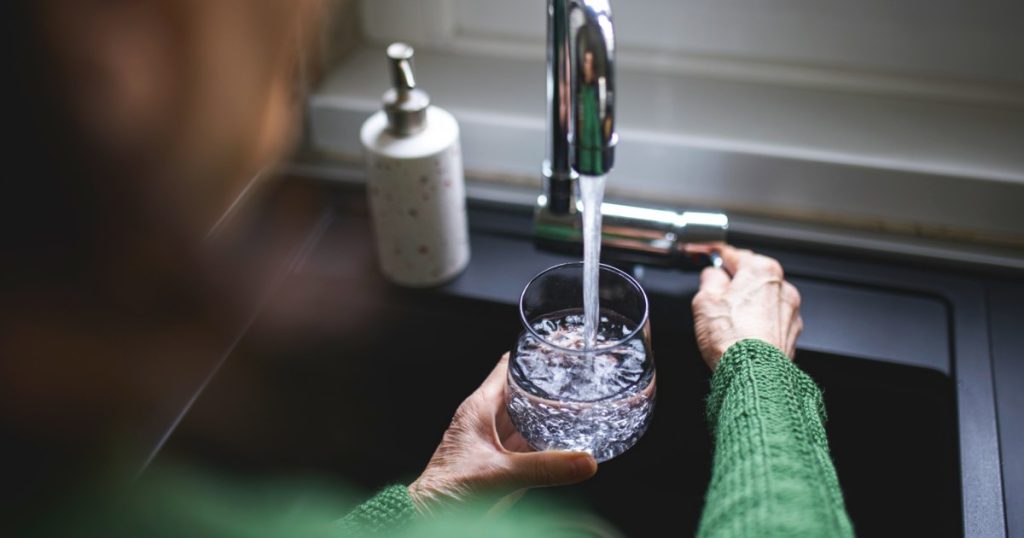
The Summary
- A newly identified chemical byproduct may be present in drinking water in about a third of U.S. homes, a study found.
- Scientists do not yet know whether the byproduct is dangerous.
- But some are worried that it could have toxic properties because of similarities to other chemicals of concern.
About a third of U.S. residents have been receiving tap water containing a previously unidentified chemical byproduct, a new study has found. Some scientists are now concerned — and actively investigating — whether that chemical could be toxic.
The newly identified substance, named “chloronitramide anion,” is produced when water is treated with chloramine, a chemical formed by mixing chlorine and ammonia. Chloramine is often used to kill viruses and bacteria in municipal water treatment systems.
Researchers said the existence of the byproduct was discovered about 40 years ago, but it was only identified now because analysis techniques have improved, which finally enabled scientists to determine the chemical’s structure.
It could take years to figure out whether chloronitramide anion is dangerous — it’s never been studied. The researchers reported their findings Thursday in the journal Science, in part to spur research to address safety concerns.
The scientists said they have no hard evidence to suggest that the compound represents a danger, but that it bears similarities to other chemicals of concern. They think it deserves scrutiny because it’s been detected so widely.
“It has similarity to other toxic molecules,” said David Wahman, one of the study’s authors and a research environmental engineer at the Environmental Protection Agency. “We looked for it in 40 samples in 10 U.S. chlorinated drinking water systems located in seven states. We did find it in all the samples.”
Chloronitramide anion is produced as chloramine decays over time. It’s likely to be found in all drinking water treated via this method, he said.
The fact that a byproduct with unknown risks could be so ubiquitous and evade researchers for so long renews questions about potential health effects of the chemicals used to treat tap water.
Some 113 million U.S. residents receive chloramine-treated water from their taps, according to the study. The chemical has been used for about a century to disinfect water. Today, it’s often used to protect a system’s “residual” — the water that remains in pipes for several days after it leaves a water treatment plant.
Increasingly, chloramine has been favored over chlorine because the latter also produces byproducts, some of which are associated with bladder cancer and are regulated by the EPA.
David Reckhow, a research professor in civil and environmental engineering at the University of Massachusetts, Amherst, who was not involved with the study, said the finding was an important step. The ultimate goal, he said, is understanding whether the substance is a hazard; he concurred that it was likely toxic.
“It’s a pretty small molecule and it can probably for that reason enter into biological systems and into cells. And it is still a reactive molecule,” he said. “Those are the kinds of things you worry about.”
The authors of the new study arrived at their results after figuring out how to formulate high concentrations of the chemical for laboratory testing, said Julian Fairey, lead author and an associate professor at the University of Arkansas.
“We don’t know the toxicity but this study has enabled us to be able to do that work now,” said Fairey, who studies drinking water byproducts. “Now, we can go about the hard work of trying to figure out what its toxicological relevance is in our water systems.”
He added that some past studies have suggested a link between drinking disinfected water and increased rates of certain cancers.
“We don’t know what’s driving these. We have no idea if this compound is in any way related to those outcomes,” Fairey said. “But we have unexplained incidents of certain types of cancer from treated drinking water.”
However, any conclusions about whether the newly identified substance is toxic are likely many years away. Potential regulation based on those eventual findings would take even longer.
“It’s a lot — probably a decade of research once a funding source is found,” said Alan Roberson, executive director of the Association of State Drinking Water Administrators.
Reckhow said that in the meantime, water utilities should pay close attention to ongoing research and try to reduce people’s exposure.
“You do what you can to minimize,” he said. “You make the best judgment you can on the toxicity and you run with incomplete information. That’s the world we live in, unfortunately.”
The EPA only regulates a handful of disinfectant byproducts, including several associated with the use of chlorine. Scientists said those regulations have pushed some water providers to increase the use of chloramine.
“This study really calls into question whether or not this disinfection process is safer from a health perspective,” said David Andrews, a senior scientist at the Environmental Working Group, an advocacy organization that pushes for more scrutiny of chemicals.
He added that there are hundreds of disinfection byproducts found in water systems but that this one deserves scrutiny.
“Many of those other contaminants are occurring at lower concentrations or less frequently,” Andrews said.
Any treatment of drinking water involves some level of health risk, Roberson said. It’s a trade-off: Disinfection processes have largely vanquished waterborne diseases such as cholera and typhoid, but research suggests that some byproducts are associated with risks of cancer and miscarriage.
“The reason you’re adding the chloramine — you want to kill the bacteria and viruses, you have a real risk-risk trade-off,” he said.
Many U.S. water utilities disclose on their websites whether they treat the water they supply with chlorine or chloramine. Wahman said some research suggests that active carbon filters, such as those used in home water purification devices or refrigerator filters, can remove disinfectant byproducts but that more research is needed.













